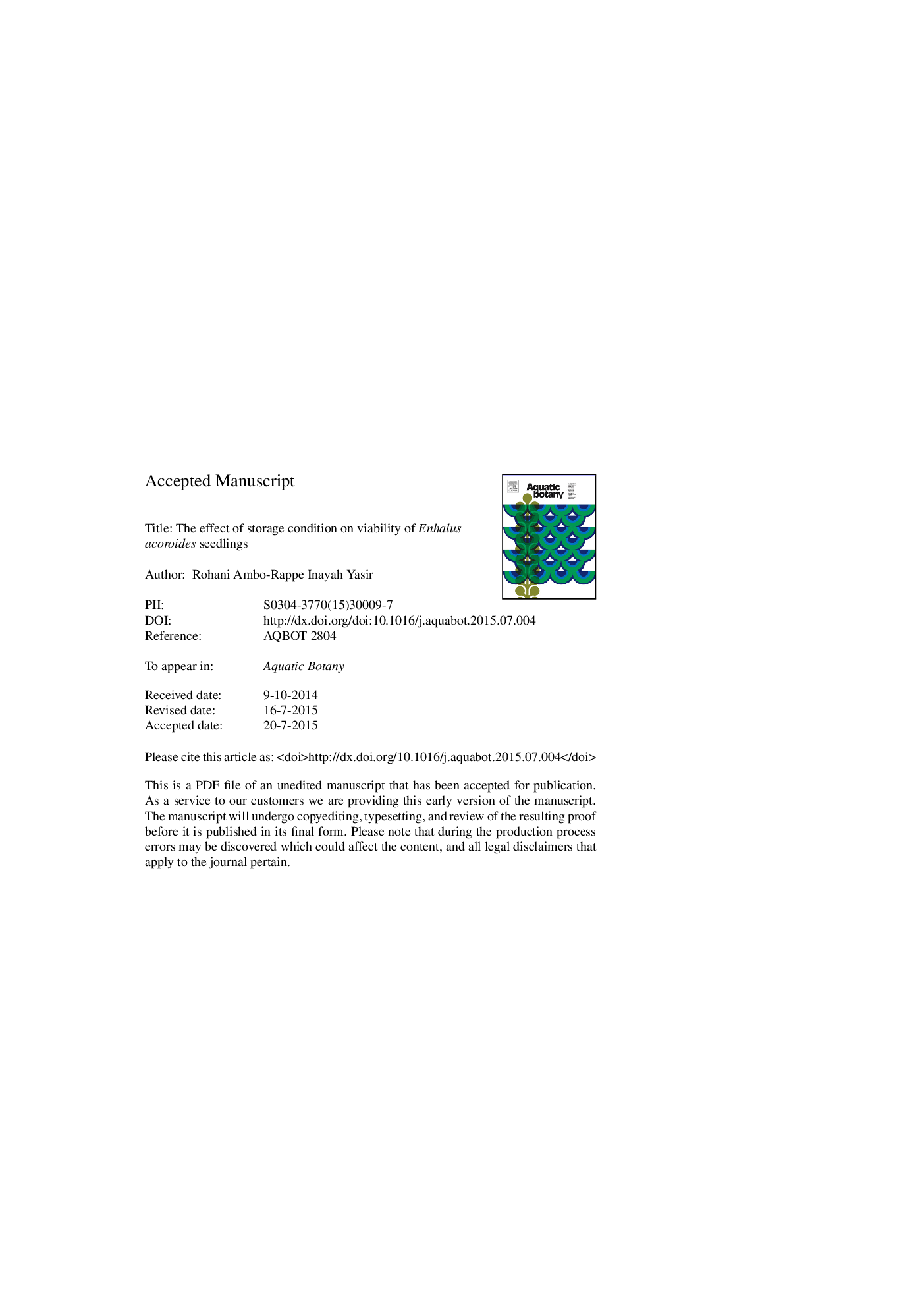| Article ID | Journal | Published Year | Pages | File Type |
|---|---|---|---|---|
| 6381715 | Aquatic Botany | 2015 | 20 Pages |
Abstract
Using nursery stock grown from seeds rather than transplants could improve success of seagrass restoration. In Indonesia, Enhalus acoroides is the climax seagrass species and the target species for restoration. However, optimal conditions for seed storage are not known. The aim of this study was to determine optimal storage conditions for E. acoroides seeds to maximize germination and growth. Seed germination was examined under different lengths of storage and storage temperatures (room and refrigerator) for Enhalus fruits (with the seed inside). Enhalus seeds did not survive well and turned black after 2 days in the refrigerator (4 °C). Seeds held in room temperature (â¼30 °C) for 2-11 days survived and grew to seedlings. Survival of the seedlings in the field was also correlated with the performance of the seedling when raised for 10 weeks in the laboratory. Seedlings stored in refrigerator had reduced survival (87.5%) in the field compared to seedlings stored 2-5 days in room temperature (100% survival). However, seeds stored up to 8 days, even at room temperature, produced seedlings that did not survive well either in the laboratory or in the field (survival was less than 20%). Our results indicate that long-term seed storage in the laboratory will not be feasible for restoration. Because using seeds for restoration is important for maintaining genetic diversity, the establishment of a seedling nursery in the field provides a viable alternative for Enhalus restoration, although it will be logistically more challenging than a seed storage bank.
Related Topics
Life Sciences
Agricultural and Biological Sciences
Aquatic Science
Authors
Rohani Ambo-Rappe, Inayah Yasir,
